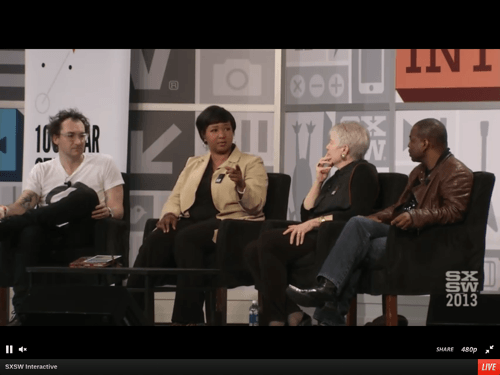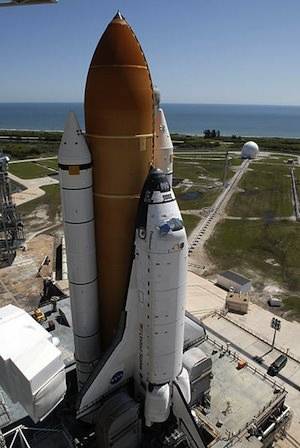
A voyage to the stars: Science fiction authors typically just assume we can do it. The awesomely ambitious 100-Year Starship project, however, was formed, quite literally, to help perform the heavy lifting.
Project members spoke in a session at the South by Southwest (SXSW) conference on Monday in Austin, where they laid out some of the problems humanity will have to overcome for humans to leave the planet. The issues range from simply finding a planet that could support human life to constructing a spacecraft that could get us there to developing some form of propulsion that would enable a manageable trip length. Then there are more prosaic concerns, like creating a self-sustaining food source and even a social structure that would preserve society over a voyage that would likely take decades, or even longer.
(Watch a webcast of the 100 Year Starship session from SXSW.)
“It’s a ‘Grand Challenge,'” affecting every nation and culture, said Dr. Mae Jemison, an astronaut and doctor who was a member of the crew of the Space Shuttle Endeavour in 1992. “Every person in this nation, every society and culture… have wondered what the stars are like,” she said. As we discover that more and more stars may harbor Earth-like planets, the 100YSS project is compiling a list of possible “targets.”

Do The Benefits Outweigh The Problems?
100YSS is flying against strong headwinds. With the end of the Space Shuttle program, the moment, the United States is currently dependent upon Russia just to reach Earth orbit. (On the plus side, Elon Musk’s Dragon autonomous rocket docked with the International Space Station just last week.) President George W. Bush’s plans to put a man on Mars never materialized, and President Obama’s secret trip to Mars is still just a hoax. More and more, cost concerns are forcing even interplanetary explorers to look for new, cheaper ways of collecting the same data via automated probes, not manned spaceships.
But just as there are a number of reasons to argue against a trip to another star, so are there reason to support it, as well. Dr. Jill Tarter, who holds the Bernard Oliver chair at the SETI Institute, reminded SXSW attendees of the spinoff benefits of space exploration, from global positioning satellites (GPS) and the satellites that helped their cellular phones operate to the trend towards miniaturization and the new materials that modern electronics are made from.
The clearest benefit is simply the scientific knowledge that can be gained through study, Tartar and Jemison claimed. Figuring out how to create and store enough energy to a power a small society through space could also help solve the world’s energy problems. Developing self-repairing systems that could survive deep space could offer new directions for earth-bound manufacturing, too.
Panelist LeVar Burton, who played Geordi LaForge on Star Trek: The Next Generation, noted that humans could simply benefit from closing the gap between science and science fiction.
Lessons For Those Of Us Who Stay Home
Plus, there’s the inevitable decline of the planet. Considering a trip to another world forces us to rethink how handle our affairs here on Earth. Humans require some 2,000 calories per day on average, but producing those calories now typically requires about 200,000. That’s not sustainable, Tarter said. “We won’t make the time when the sun goes out, not the way we’re going now,” she added.

The longevity of human society is another issue – and those concerns would be magnified for space travelers cooped up next to one another for dozens if not hundreds of years. “After 100 years, I couldn’t stand you another second,” Jemison said.
After all, in a completely closed environment, you can’t even wash your clothes. Jemison reminded the audience that manufacturing dying and washing clothes can be one of the “nastiest” on earth. “So you have to think differently all the time, but at the same time, clothing is our identity… and how do you keep that identity?”
Let’s Get Physical
The Barbarian Group’s Benjamin Palmer, who moderated the discussion, made an astute point: the problems of going to the stars are physical, so very different from the software and apps that rule the rest of SXSW. To make this work, there may need to less “separation between physical, software, and the biological,” said Tarter. Or perhaps there’s another alternative. “Maybe we’re not sending humans,” she asked, “but human representatives that are something else.”
Jamison and Endeavor images via NASA.










